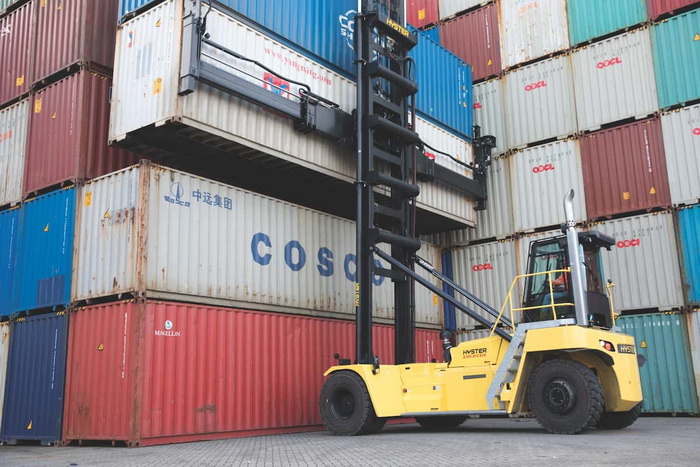A lifter is a self-propelled vehicle which takes, lifts, moves and stores the cargo. This car is often used for door to door transportation, constructions and other industrial spheres. It eases the process of replacing the materials and goods, increases labor productivity and can be used both inside and outside.
Classification
The lifters are classified according to the type of work they do. They are divided into a fork and bucket. Let’s look at them in more detail.
The fork lifters can move pallets, boxes and trays in the warehouses, and load the goods and materials into the trucks. Pitchforks, which help to replace and load the cargo, are strong metallic lines bent at a right angle. The special construction of the capturing mechanism allows replacing rolls, jars, and different nonstandard containers.
The mechanism of forklifts is based on the telescopic hydraulic lifter which moves the constructions vertically. There are three types of such facilities: frontal lifter, side vehicle and sideshifter. When making a choice, you need to pay attention to the characteristics and peculiar features. Namely you need to consider:
- Loading capacity;
- The opportunity to place extra equipment;
- Engine power;
- The placement of carriage;
- The height of the lifter.
To store the rolling material you should use extra equipment which can be shifted. To replace long materials which are used in building, you should use grabs. These lifters move thanks to the wheels. They also can be equipped with pneumatic or rubber tires. The first ones are effective to be used outside where the road is not so flat. The lifters with rubber tires are helpful inside the buildings.
Bucket lifters are often used by construction organizations. There are vehicles which move on the wheels, on the track and on the rails.
The vehicles can have one or more buckets. Depending on the kind of work, buckets of different sizes are used. The application of these vehicles is to move the sand, snow, stone, rubble, and gravel. The vehicles with one bucket are divided into frontal, static and incompletely turning.
All such vehicles work cyclically. The main working characteristics of these lifting facilities is loading capacity. Thus, bulk lifters are divided into:
- Heavy-load – can work with cargo which weight is more than 22000 pounds;
- Heavy – 22000 pounds are maximum;
- Usual – work with 4,4-8,8 thousand pounds;
- Light – work with light cargos which are less than 4,4 thousand pounds.
Vehicles with many buckets work without pauses. Apart from many buckets, this facility has a mechanism of loosening. It can transfer soil or any other bulk material. The industry often produces different covering equipment for the bucket lifters. It gives an opportunity to use the vehicle while moving away the snow, repairing different facilities and digging trenches.
Special lifting facilities can work with the help of gas, diesel or electricity. The last ones are the most relevant for the transport companies, which often deal with cargo replacement and loading.

